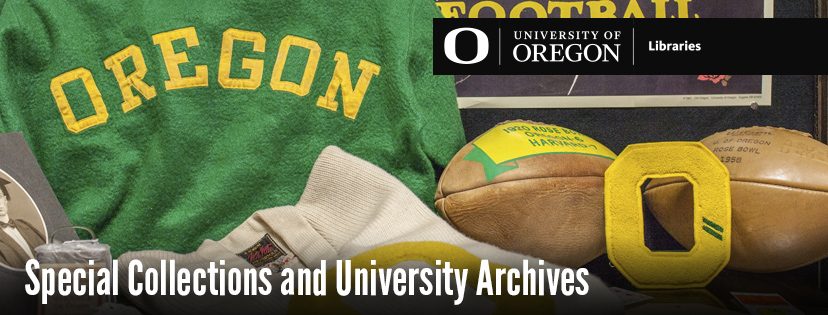“What’s Past is Prologue”: the Folger Shakespeare Library at the Museum of Art
This is the fourth of a series of blog posts that explore exhibits during the 1960s at the Museum of Art at the University of Oregon, known today as the Jordan Schnitzer Museum of Art. Part of the Documenting UO History Project, this series will investigate two major types of exhibits: the Statewide Services Program and national exhibits that traveled to the Museum. The University Archives collection of the Museum’s records, cross referenced with the Jordan Schnitzer’s current holdings, reveal a unique institutional history of the Museum, its exhibits, and its employees. Though the Jordan Schnitzer’s current focus is on Asian art, and the Museum of Art also worked to complement its Asian collection, this project will focus on a variety of other kinds of exhibit subjects. See previous posts here.
Did you read Hamlet, A Midsummer Night’s Dream, Macbeth, or Richard III in high school or at the University of Oregon? Without the publication of William Shakespeare’s First Folio, you may not have ever had the opportunity to read these plays. The Folger Shakespeare Library in Washington, D.C. holds several copies of the First Folio, among other publications by Shakespeare. In the first months of 1967, the University of Oregon’s Museum of Art hosted an exhibit from the Folger of Shakespearean plays and photographs of productions.
Wallace Baldinger, the director of the Museum of Art, wanted an exhibit on Shakespeare for April-May of 1967. As a major research institution and museum, the Folger was happy to send him one of their traveling exhibits. It included some famously important works, such as a copy of The Merry Wives of Windsor, part of the First Folio from 1623, and a copy of a Quarto of The Merchant of Venice from 1619. The traveling exhibition also incorporated photos and prints of famous 20th century actors playing Shakespearean characters.
These items all needed high standards of museum care, but The Merry Wives of Windsor and The Merchant of Venice required special security arrangements. These two objects were the most valuable in the traveling exhibition. All the pieces would be shown to the public in locked fireproof cases, but displaying the previous two also meant that museum’s staff had to remove them to a locked storage vault every night. This was likely required by the Folger’s insurance company. Such requirements were not unusual for big ticket items in museum care, and that remains true today at the Jordan Schnitzer Museum of Art.
At the same time, the exhibit from the Folger seems to have encouraged UO students to visit the Museum of Art. This was particularly true for students who otherwise would not have gone inside. Wallace Baldinger wrote to Philip Knachel, the Folger’s Assistant Director, that the exhibit was fascinating and especially engaged students from the English Department. In 2017, the Jordan Schnitzer Museum of Art continued this tradition of engaging students with participatory exhibitions in its recent showing of Sandow Birk’s American Qur’an. For more on Birk’s project, please click here.
Just last year, the JSMA hosted another Folger Shakespeare exhibit called First Folio! The Book that Gave Us Shakespeare. The First Folio was the star of the show – visitors could see in person the “To be, or not to be” monologue from Hamlet! At the same time, Special Collections and University Archives hosted a companion exhibit called Time’s Pencil. It gave examples of how Shakespeare developed his writing after the 1623 First Folio and how his work has been utilized since. Special Collections also sent some of their rare book collection to the JSMA to complement the Folger’s exhibit.
Clearly, it is useful for institutions to collaborate on exhibitions that engage a wide range of people. The Museum of Art utilized the resources of the Folger Shakespeare Library in the 1960s, and though both institutions have developed in the last forty years, they continue to work together in the present day on new projects for the public.
Angela Rothman
Special Collections Intern
Documenting UO History Project

